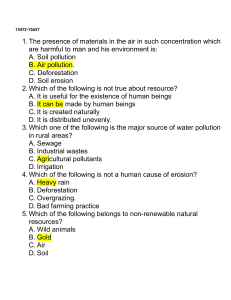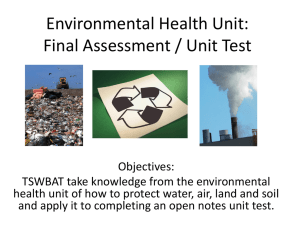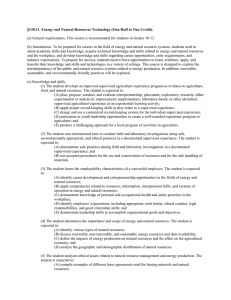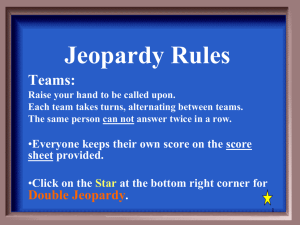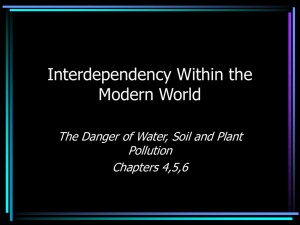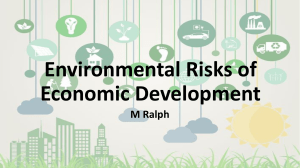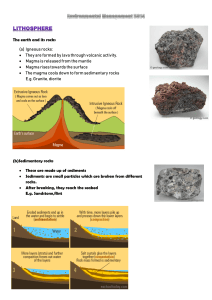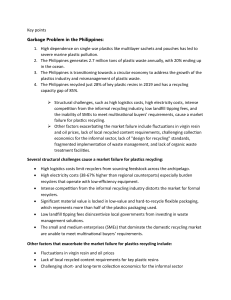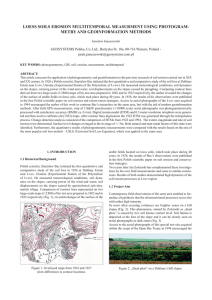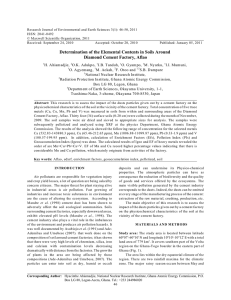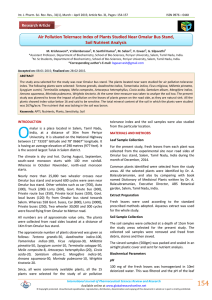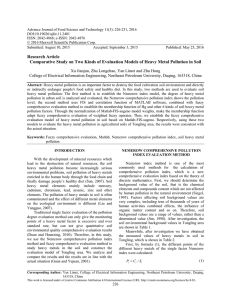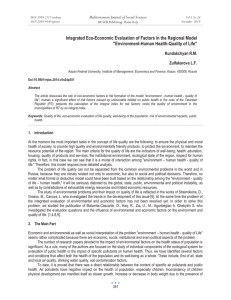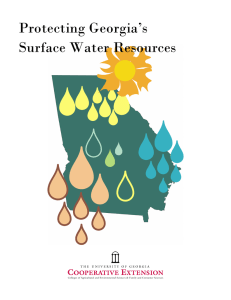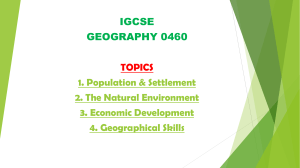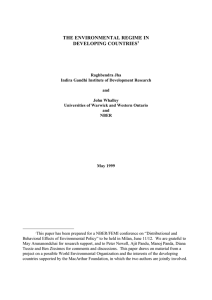Unit 2 Study Guide Answer Key
advertisement
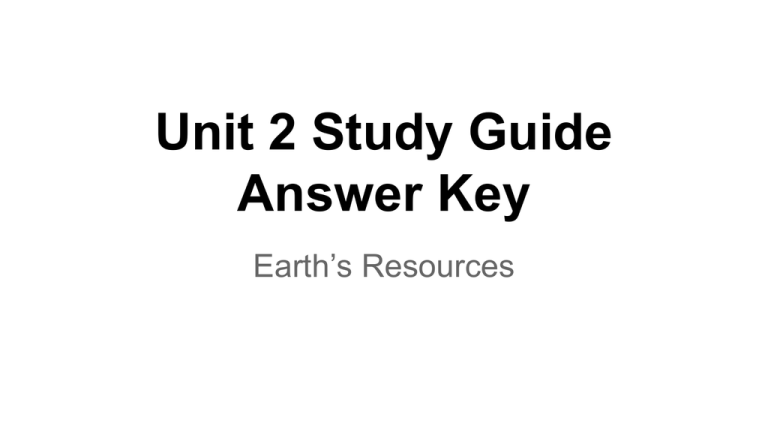
Unit 2 Study Guide Answer Key Earth’s Resources 1.Vocabulary a.) Natural Resources - natural things (land, water, air) that you would use. b.) Alternative Energy Sources - different ways to get power/energy (clean energy - solar, geothermal, wind, hydroelectricity) c.) Fossil Fuels - any hydrocarbon that may be used as a source of energy. d.) Point Source Pollution - water pollution that comes from a known and specific location. e.) Nonpoint Source Pollution - water pollution that does not have a specific point or origin. f.) Runoff - water that flows over the land surface rather than seeping into the ground. g.) Urbanization - the transfer of land into an urban area. h.) Deforestation - the cutting down of a forest to use the lumber for human use. i.) Conservation - the careful use of resources. 2.) What is a renewable resource? a.) A resource that is virtually inexhaustible or that can be replenished over relatively short time spans. 3.) What is the advantage of solar energy? a.) Renewable, nonpolluting, clean energy 4.) What is contour plowing? a.) A soil conservation method that plows along/across the hill slopes (with the hill) 5.) How is hydroelectric power produced? a.) Falling water that passes through a turbine and turns the turbine. 6.) What is a major use of freshwater? a.) Drinking water, cooking, growing food, flushing toilet (most) 7.) What is the source of geothermal energy? a.) Natural underground reservoirs of steam and hot water 8.) What are land resources? a.) Soil, minerals, forest 9.) How does mining damage land? a.) Increases soil erosion 10.) What does the greenhouse gas carbon dioxide help to do? a.) Maintain warmth near Earth’s surface 11.) Give information about the following: a.) Peat - youngest fossil fuels, relatively cheap resources when compared to others. b.) Coal - is formed when peat is physically/chemically altered, when burned impacts greenhouse gases and climate change c.) Natural Gas - transported by pipeline, cleanest energy source, a flammable gas d.) Oil - formed when the remains of small animals are buried/compacted, drilled from the Earth, starts out as petroleum e.) Wood - can lead to deforestation if not managed, used for many different purposes. 12. Pros & Cons of the following a.) Mining P - obtain resources from underground C - dangerous to humans, soil erosion, large open pits for animals/humans to fall into b.) Drilling P - small openings (no large pits) to obtain oil C - leaking of oil into soil/water, spills as oil travels through pipelines c.) Fracking P - a “clean” way to obtain oil from lower ores (under the water table) C - harmful to human health if leaked into water table, by product is flammable d.) Deforestation P - allows for use for building materials, resources used on daily basis C - large areas of land are lost, habitat loss, soil erosion

